Last Updated on November 28, 2020
We let the dust from the road shimmy around our feet and the silence wrap us from all around. In front of us stood the board we had traveled over 4000 km to see. It read – Pangsau Pass
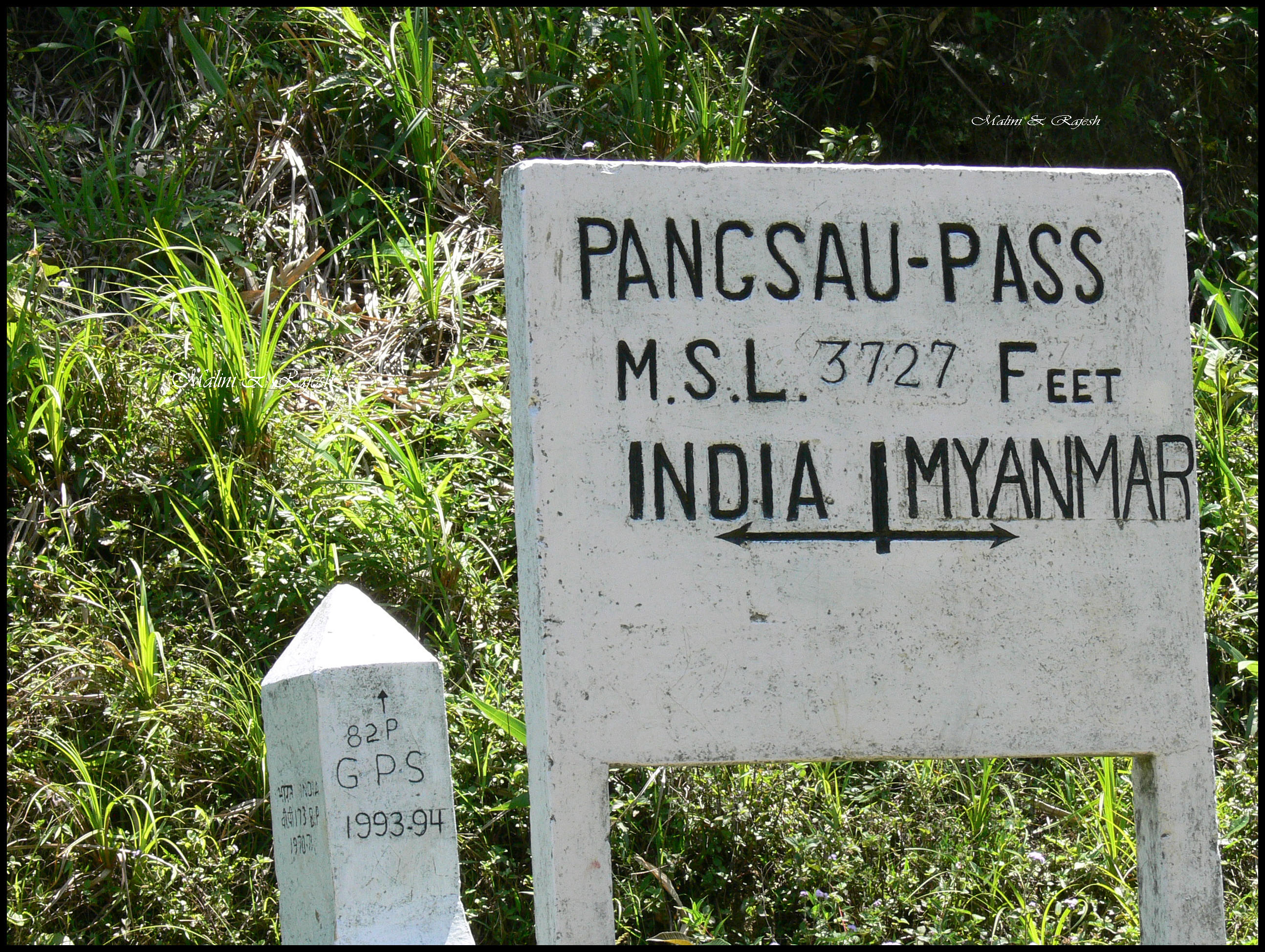
It was a sight we had seen without having been there. And it also wasn’t déjà vu. The scene had popped out at us in an album viewing session with someone who now has permanently found a place only in photos and memories.
Unlike the other posts in this blog, this one begins with an irresistible flashback of sorts. And I can’t help – figuratively speaking – bring to life (if only through words, which is what he loved most!) the person who I rank as one of my biggest personal losses. Arun Veembur, my nephew extraordinaire.
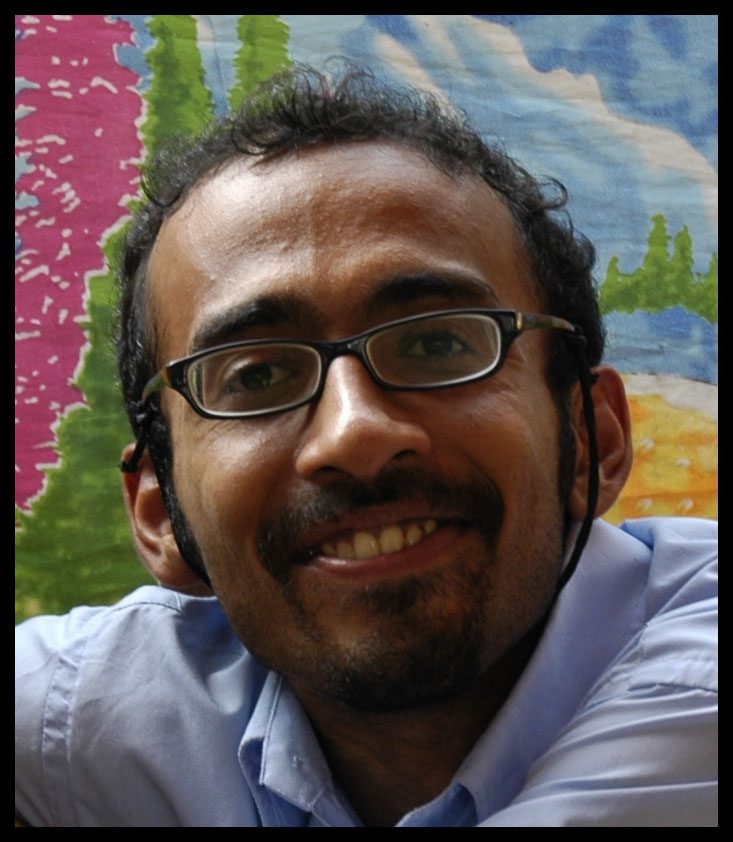
Arun Veembur – the intrepid traveller
To sum up Arun in a few words is like trying to bring out the OED on an A4 sheet. But suffice to say, for now, that he was a brilliant student, an impossibly reckless but adorable human being, a fantastic writer, a traveler intrepid and a dreamer like no other. If you didn’t notice the tense in which I am forced to refer to him, he is also no more.
Arun lost his life in a tragic mountain hiking accident in Dali, in Yunan Province, China. Out on a solo trek in November 2009, despite being a trained mountaineer, he lost his way, his footing and his life on the rocky outcrop of the unforgivably treacherous Cangshan mountains.
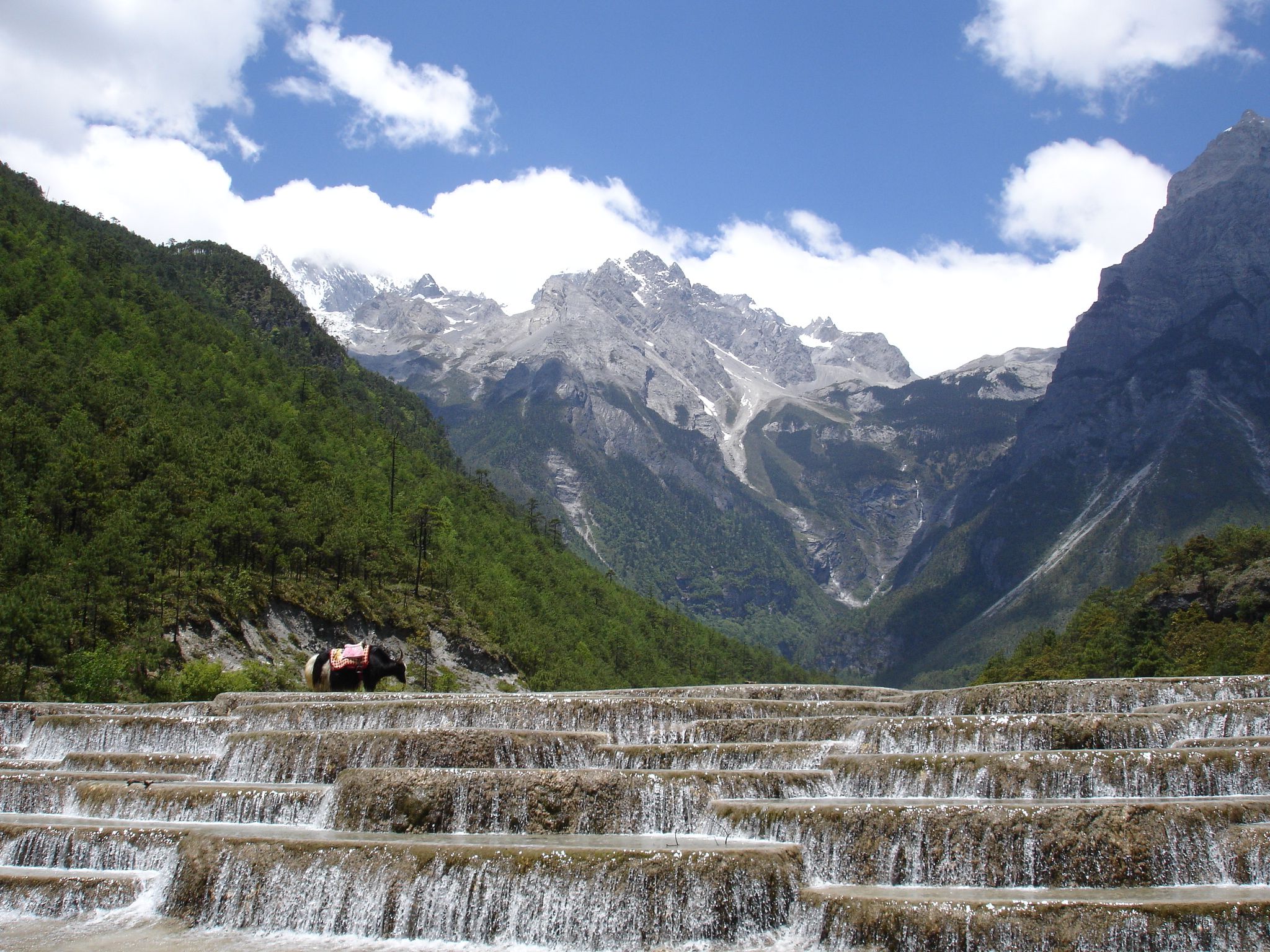
Just how this brilliant young man, hailing from Kerala and born and raised in Bangalore, came to live and die in China has something to do with the Pangsau Pass. More than the pass itself, the object of Arun’s infatuation was a super-strip of vintage tar laid during the World War-II days by the Allied forces. A road christened the Ledo Road, later also immortalized as the Stilwell Road.
Joe Stillwell and his Stillwell Road
The Stilwell Road, named after the US General Joe ‘Vinegar’ Stilwell, was Arun’s muse and his dream project for the last five years of his 28-year-old life. To travel it and write a book on it became his mission unto the very last.

Starting from Ledo, in Assam’s easternmost flanks, the road seems to have from thereon a mind of its own. Snaking through Jairampur, in Arunachal, and further down past Nampong, the last village on the Indian side, it lumbers on through the thick jungles bordering Burma. (Though renamed as Myanmar, in line with the spirit of the road and its legend, I have liberally used the country’s older name in many places in this post. There is something mystical, almost magical that seems to ring with Burma and things Burmese!)
Beyond the border, it surfaces up at Pangsau village – the first on the other side – and continues onwards in its undulating journey up and down the mountains. The road finally enters China to further soldier on till Kunming. That is a journey of no less than 1736 km. Meant to be the lifeline to transport men and arms to help the Allied forces battle the Japs, the road was built at great human and financial cost over some of the most impossible terrains in under two years. The unsung heroes who helped build it were a staggering 40,000 plus soldiers. British, Americans, Indians, Burmese and those from nearly every nation that were part of or stood with the Allied forces contributed unremittingly to the cause.
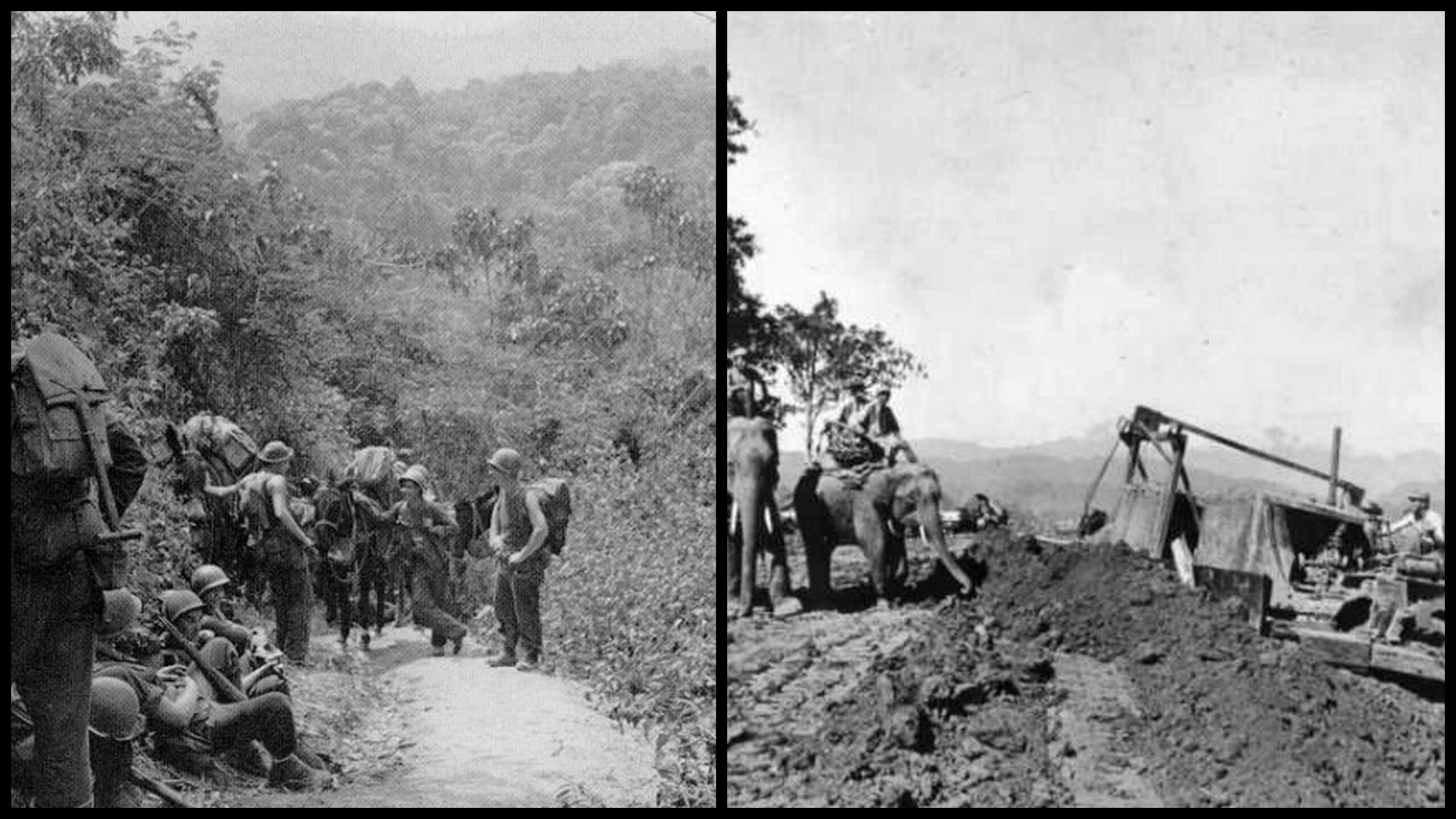
Is that a river?
It is famously retold that, during an air sortie over the mountains one monsoon during the war, Lord Mountbatten enquired the name of the river he thought he saw down below in the Hukawng Valley. No, he was told, that was no river. That was, in fact, the Ledo Road. And just how tough the Pangsau leg of the road is, reflects in the name they gave the place – Hell’s Pass.
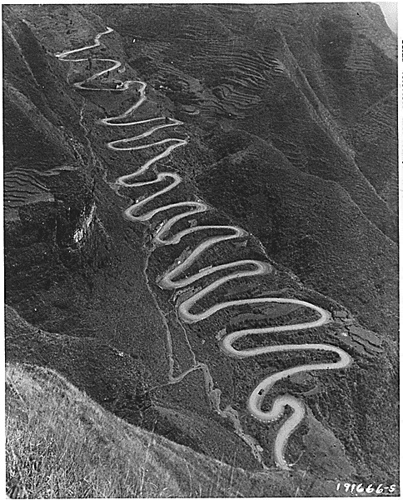
It must have been stuff like that which must have inspired Arun. For someone like him, it was also not difficult to inspire others. Let me hasten to clarify that ours was not to try and attempt a crossing of the Stilwell Road. At best, our visit to Pangsau Pass and a drive down the iconic road was a pilgrimage – an undying tribute to someone for whom the road meant a lot, his life.
Our first glimpse of Stillwell Road
We flagged ourselves off on the day after Dussehra and our starting point, Tinsukia, and the whole of Assam was at her festive cheeriest. Despite the permanent smile he wore, we suspect that Das – who is fondly called Dasda by anyone who he has driven around the North East – was not entirely mirroring that feeling. What with having to be on duty after a night out at a puja pandal. But to his credit, it soon became clear as to why he is so regarded so highly – both as a driver and a travel companion.
Our stopover at Digboi was followed by a drive through the towns of Ledo and Lekhapani till we got to the point that formally announced the beginning of the Stilwell Road.

Stillwell road begins here
This was where Arun had got to about 5 years ago and told us about the goosebumps he had felt. At around noon on the 6th of October, 2011, we were to feel the same. We were 12 km away from Jagun and 24 km from Jairampur, the last town in Assam and the first in Arunachal, respectively.
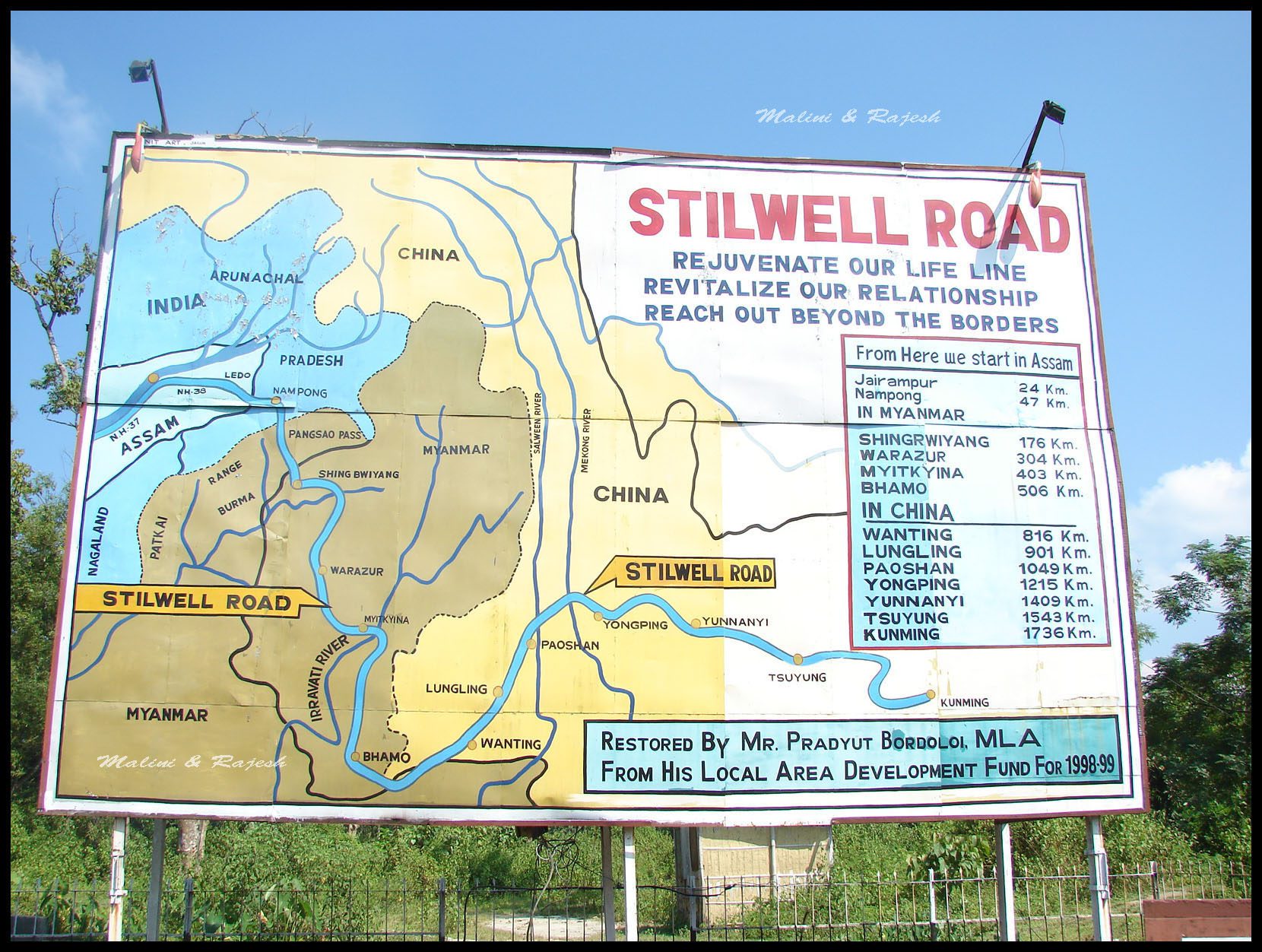
We were handed over our Inner Line Permits at the Jairampur check-post by none other Mr. Arif Siddiqui, an accomplished photographer and the man behind www.amazingarunachal.com, an excellent resource on Arunachal tourism. Mr. Phupla Singpho, our friend at Miao and who runs his own NGO promoting tourism in Namdapha, had helped us with these permits and, of course, our Namdapha visit later in the trip. Our documents found to be in order, we felt another ray of current pass through us as we stepped foot in Arunachal for the first time!
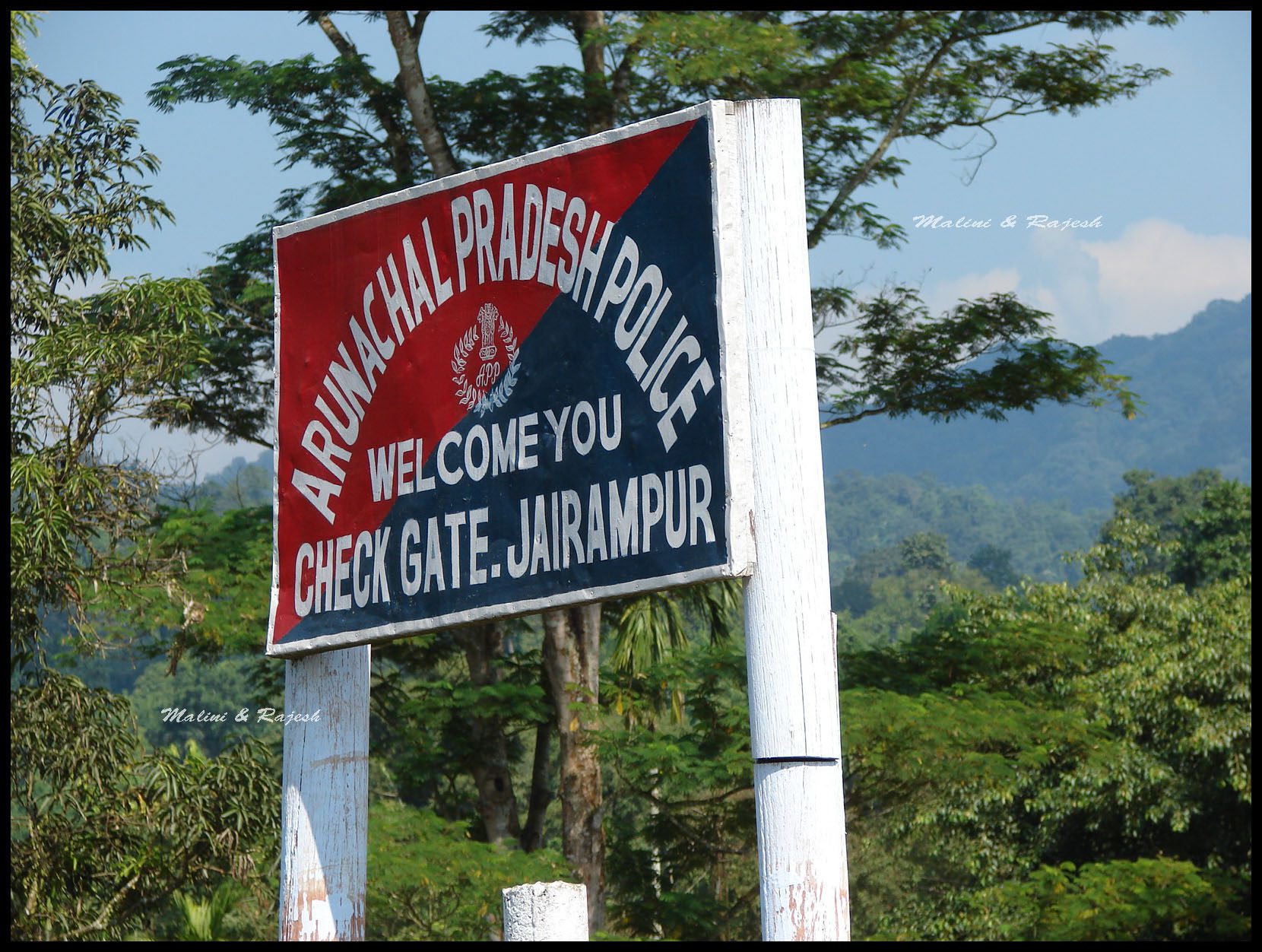
Lunch was at a smallish restaurant – more of a dhaba – and further on we passed the Assam Rifles cantonment.
Vivekananda Kendra, Jairampur
Our next stop was at the Vivekananda Kendra school where we had a wonderful meeting with the charming principal, Dubeyji and the administrator, Ramachandranji.
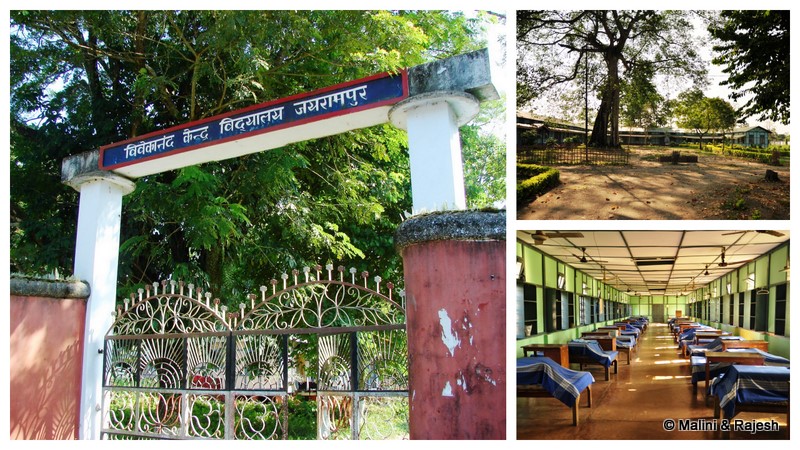
One of the earliest in a pioneering chain of educational institutions in Arunachal, we saw up close the serene premises of VKV, Jairampur. We walked around the classrooms, the boarding dormitories and met up with many of the students there.
World War II cemetery, Jairampur
Continuing on the Stilwell Road, we were now headed for the World War II cemetery. About 7 km further down from Jairampur, we were driving slowly lest we should miss it in the thick overgrowth.

But we were pleasantly surprised to see that it had now been bestowed some respect and had a prominent entry gate, making it hard to miss.
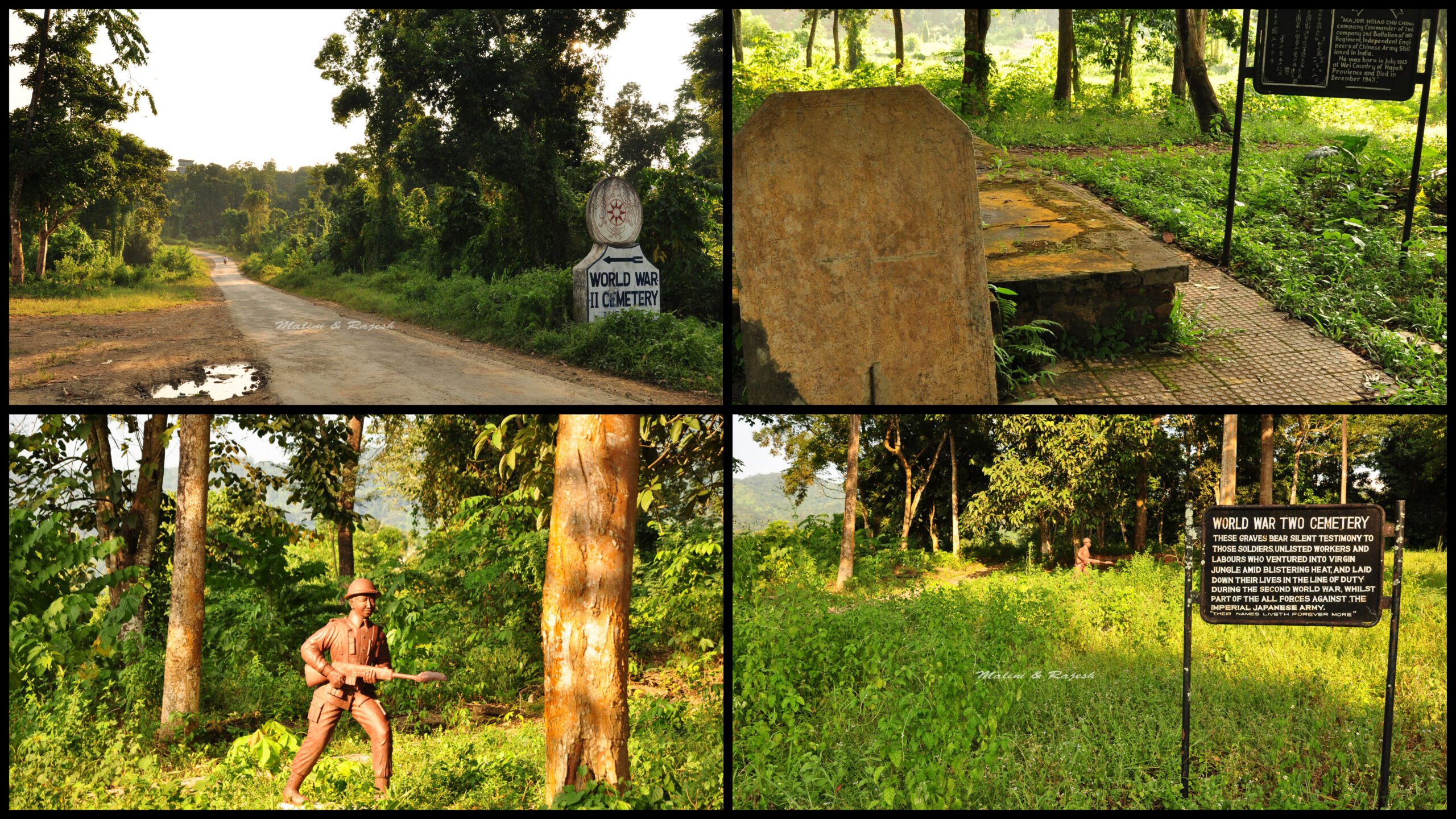
We spent some time among unknown gravestones and randomly meandering paths. It was somewhat eerie with the silence from the remoteness of the place and the fact that we were the only two living amidst the many departed and underground. After spending an hour or so with the martyrs, spotting a few butterflies and clicking a few photos, we left for Nampong, the easternmost Indian habitation on the Stilwell Road.
Nampong Village
It was getting dark and the road was, by then, taking a turn for the worse. Eventually, after being stopped briefly at an army check-post, we drove into Nampong even as the sun was all but down.
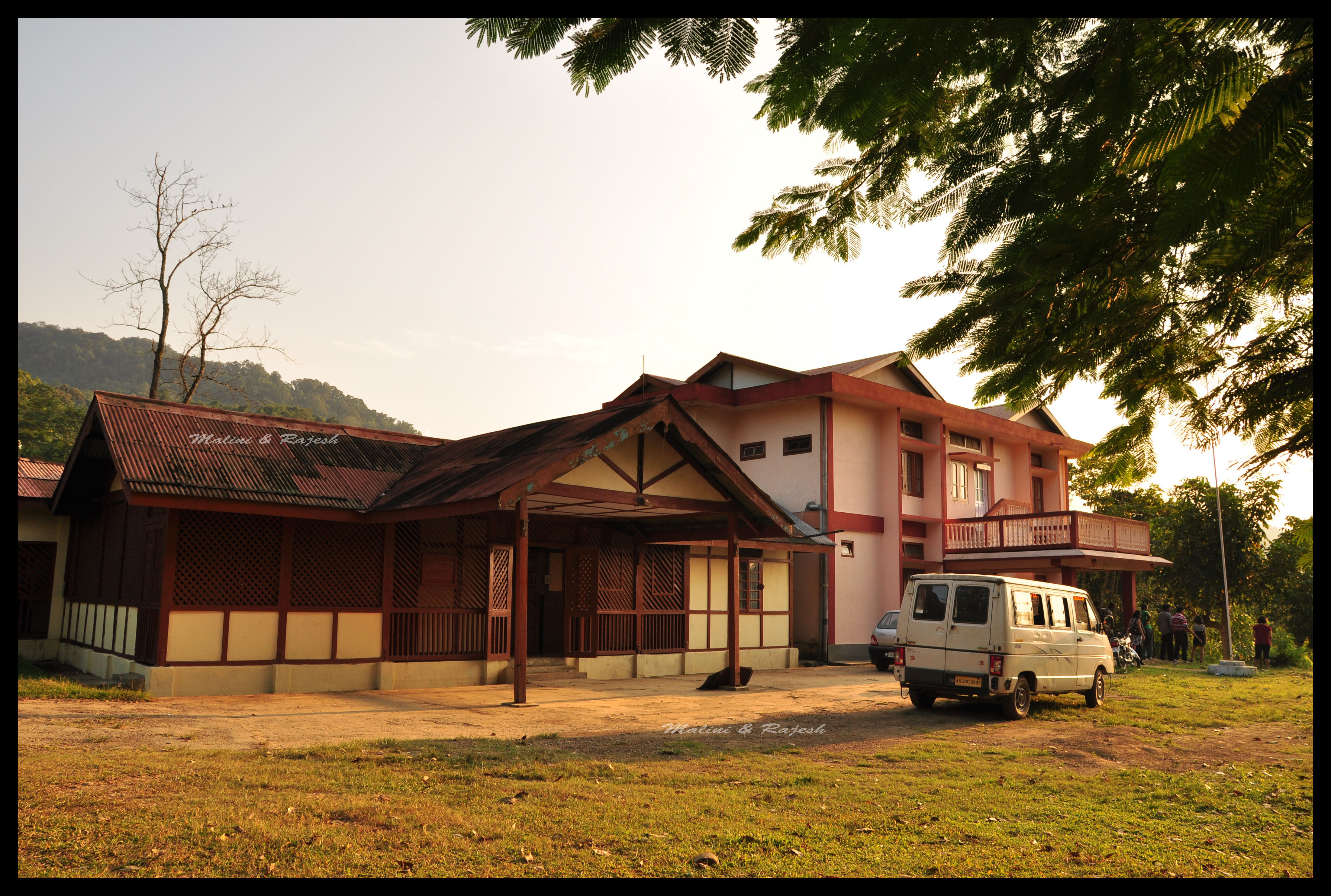
We were booked into the Nampong Inspection Bunglow which was a little way above the marketplace and just before the checkpoint that screens movement onwards to Pangsau Pass and Pangsau village.
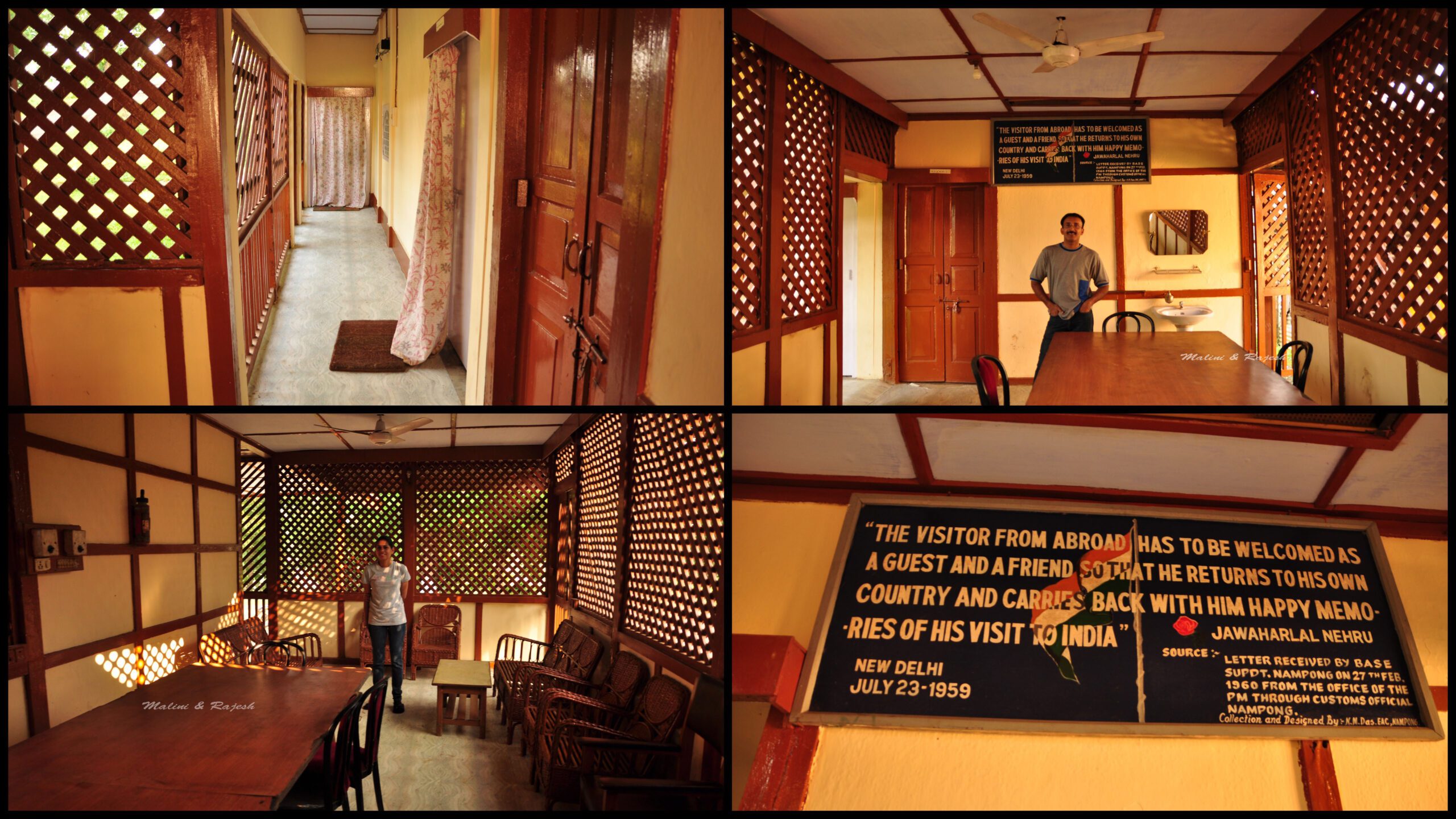
The IB itself was a tidy arrangement, with an old wing and a new. There was ample parking space and the whole premises overlooked Nampong town, the surrounding mountain range, and a brilliant sunset. We walked into the strains of music wafting about and were told that there was a music band that had driven in all the way from Guwahati to play in the Pooja pandal that was set up in town. And, post-dinner, we settled down to some seriously elevated balcony seats, in the lawns of the IB, and watched and heard the band play to an appreciative crowd down below.
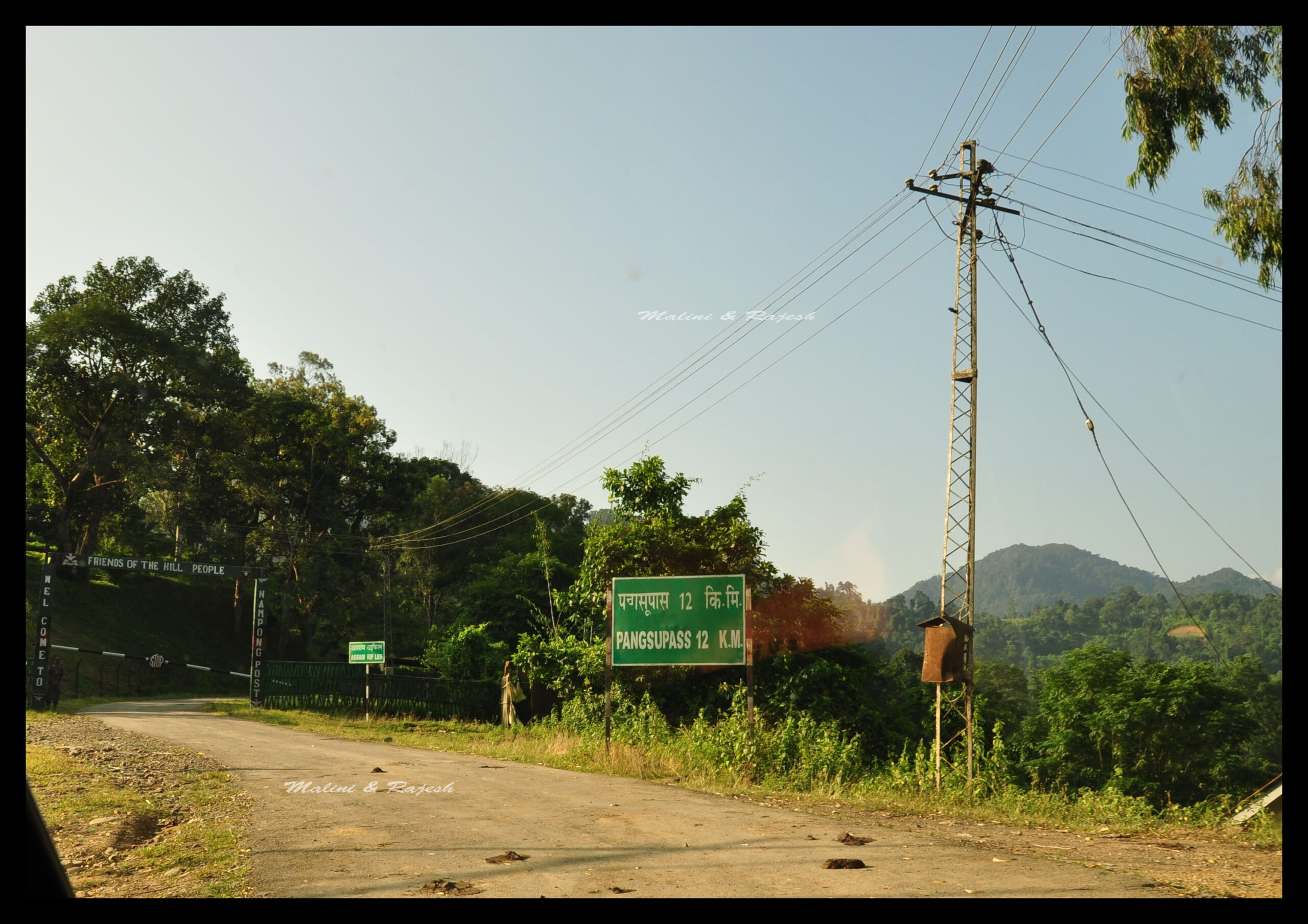
Nampong check-post
We were up early morning and found Dasda giving his car a thorough wash. Packed, we were ready to head out to Pangsau Pass and be back before noon. Our chat with the IB staff, the previous night, had prepared us for some rather uninspiring news. We would not be able to cross over at the border and would have to miss the Lake of No Return and Pangsau village.
Visitors from only either one of the nationalities could cross the border on a given day. It was a Friday and Fridays were Burma Day – which meant only Burmese villagers could cross over. Indians could go over only on the 10th, 20th and 30th of each month. If it weren’t a Friday, we could still have worked out some arrangement. Guess we would have to return to Nampong during one of the Pangsau Pass winter festivals – usually held in December – some other time.
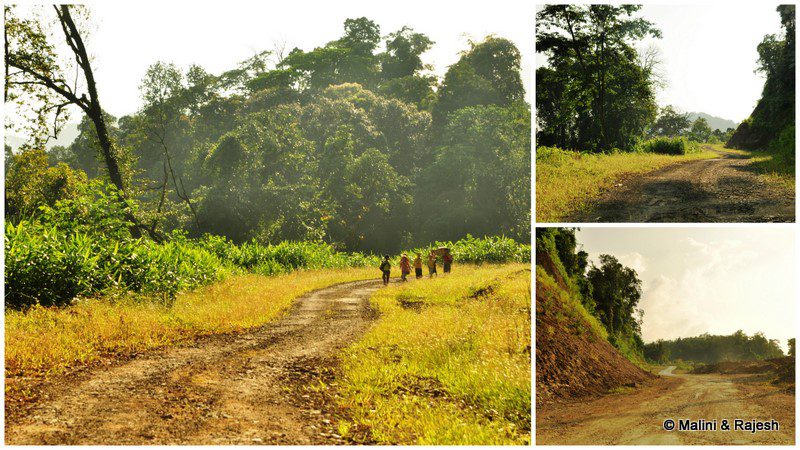
After a brief stop at the check-post outside the IB, we were flagged off. We had our documents ready – Inner Line Permit to reach Arunachal Pradesh from Assam and SDO Nampong permit to cross the Indian Border.
While we were waiting, we saw the first batch of Burmese villagers, with their baskets, walking up. Some were a little wary while others looked away but what caught our attention was they were nearly all women and children, hardly any of the menfolk.
Driving down the Stilwell Road to Pangsau Pass
We drove on through absolute wilderness. Wooded slopes dotted the hills around and the dust rose menacingly from the under-construction road. In places, Joe’s road was as unmanageable as the Japs had been during those days. Dasda just took it all in his stride even as he kept up an amiable commentary on the region and its people.
All throughout, we noticed more but small batches of villagers walking in, chatting and giggling among themselves, unaware of clicking cameras from passing vehicles! Talking of passing vehicles, there were actually none other than ours. Except for a rundown, open-backed van that plied up and down and made a good fast buck out of the hapless villagers, saddled with their purchases on the way back. The going rate, Dasda added, was Rs. 100 per person for a ride.
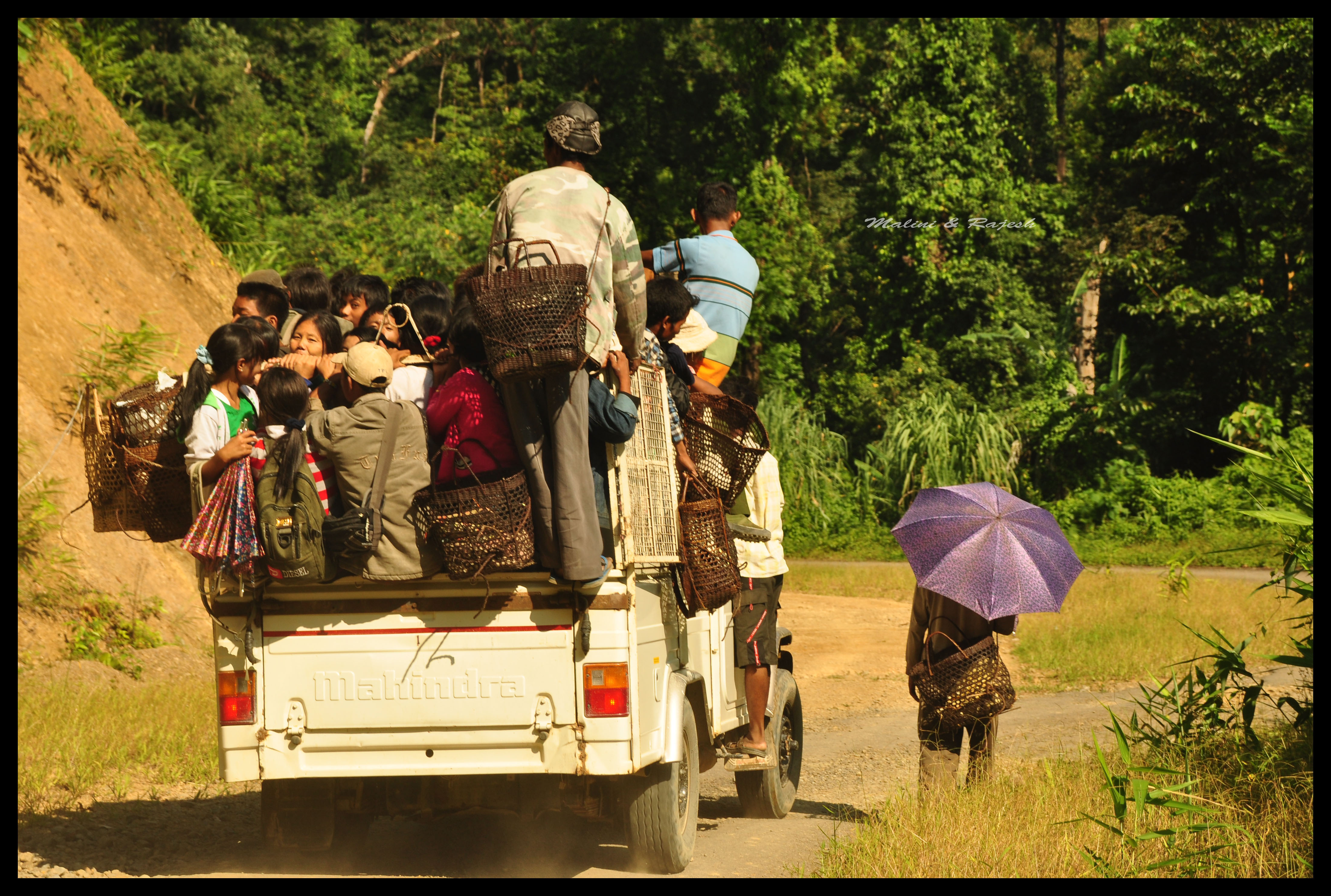
We noticed something else. As a kind of travel insurance, the women had smeared their faces with some paste; apparently, this was to de-beautify themselves…strangely, leaving home is not always about looking good.
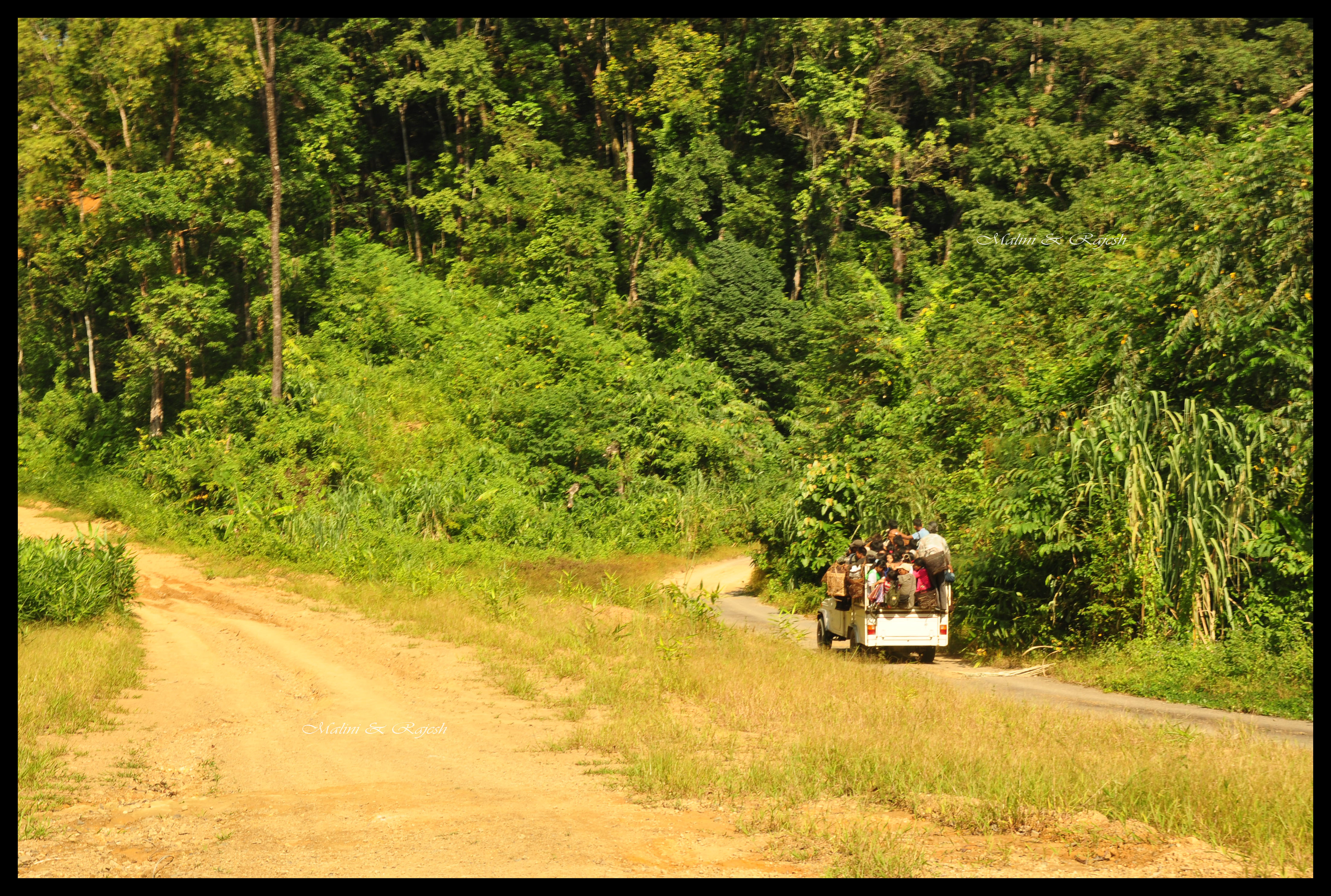
At one place, the road split into two. One of them, the more decrepit, was the old Stilwell Road while another, a newer branch had carved its own modern-day identity.

No man’s land
We must have travelled about 12 km when we spotted a motley congregation ahead. We were at the border check-post and the Indian Army was screening the Pangsau villagers. Sure enough, there were the green-uniformed Indian guards, some of whom were busy checking documents. The large majority of the visitors just squatted and hung around all over, waiting for their one day permit that meant a week-long stock of goods ranging from salt to clothes, bicycles to batteries and, yes, booze!
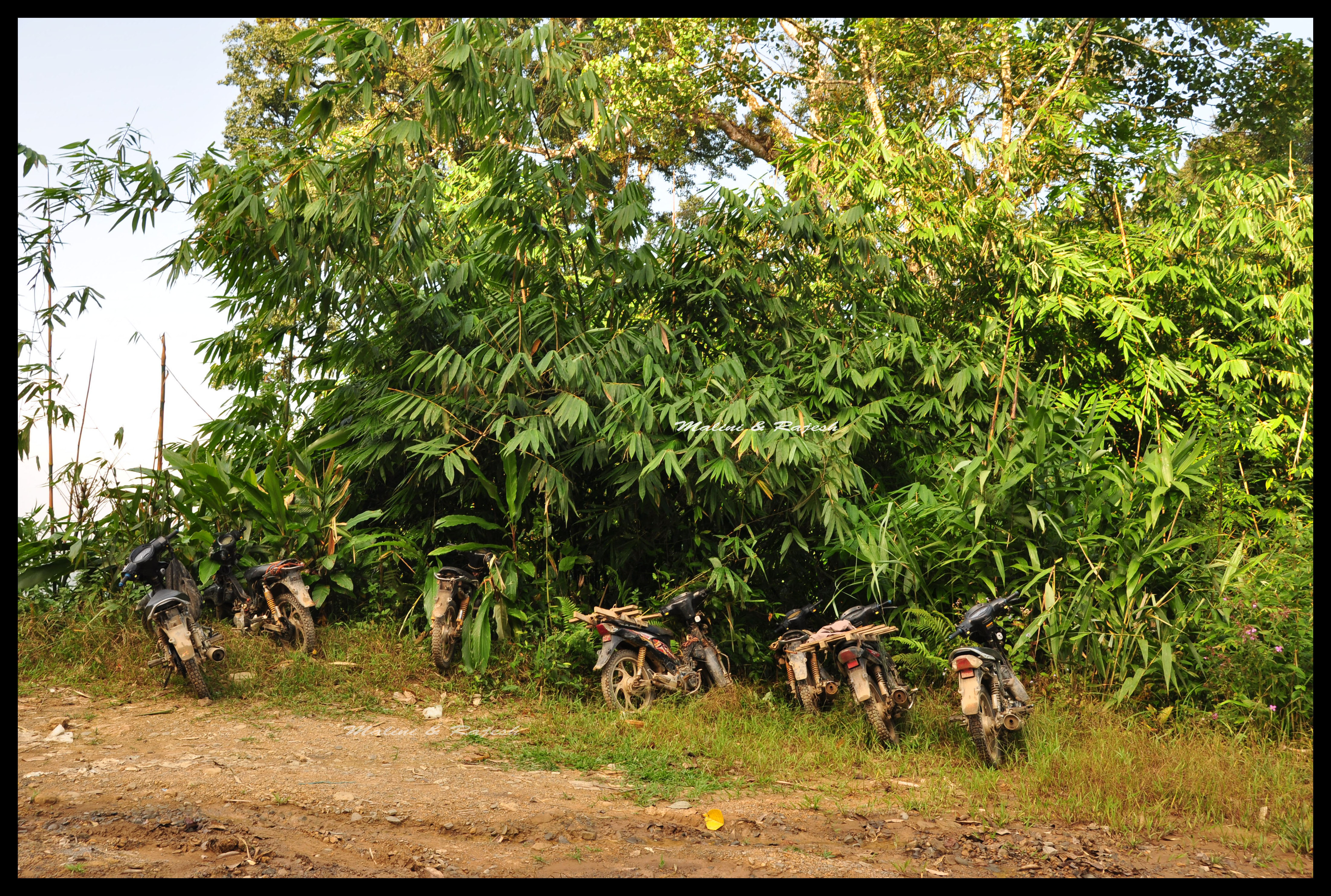
Over to a corner by the roadside, there were a dozen or so rundown mobikes without character or number plates, dumped to one side. These, we learnt, belonged to some of the more ‘affluent’ villagers who had, at least, saved on trudging the distance from their village to the border.
Being escorted to Pangsau Pass
There were about fifty-odd of the villagers and about half a dozen soldiers eyeing us. Dasda did the honours by introducing us to a senior Army man who promptly arranged for one of his men to escort us till the official border. Dasda chose to stay back and we set off with our new friend who seemed to carry his full rifle and a half smile with equal ease.
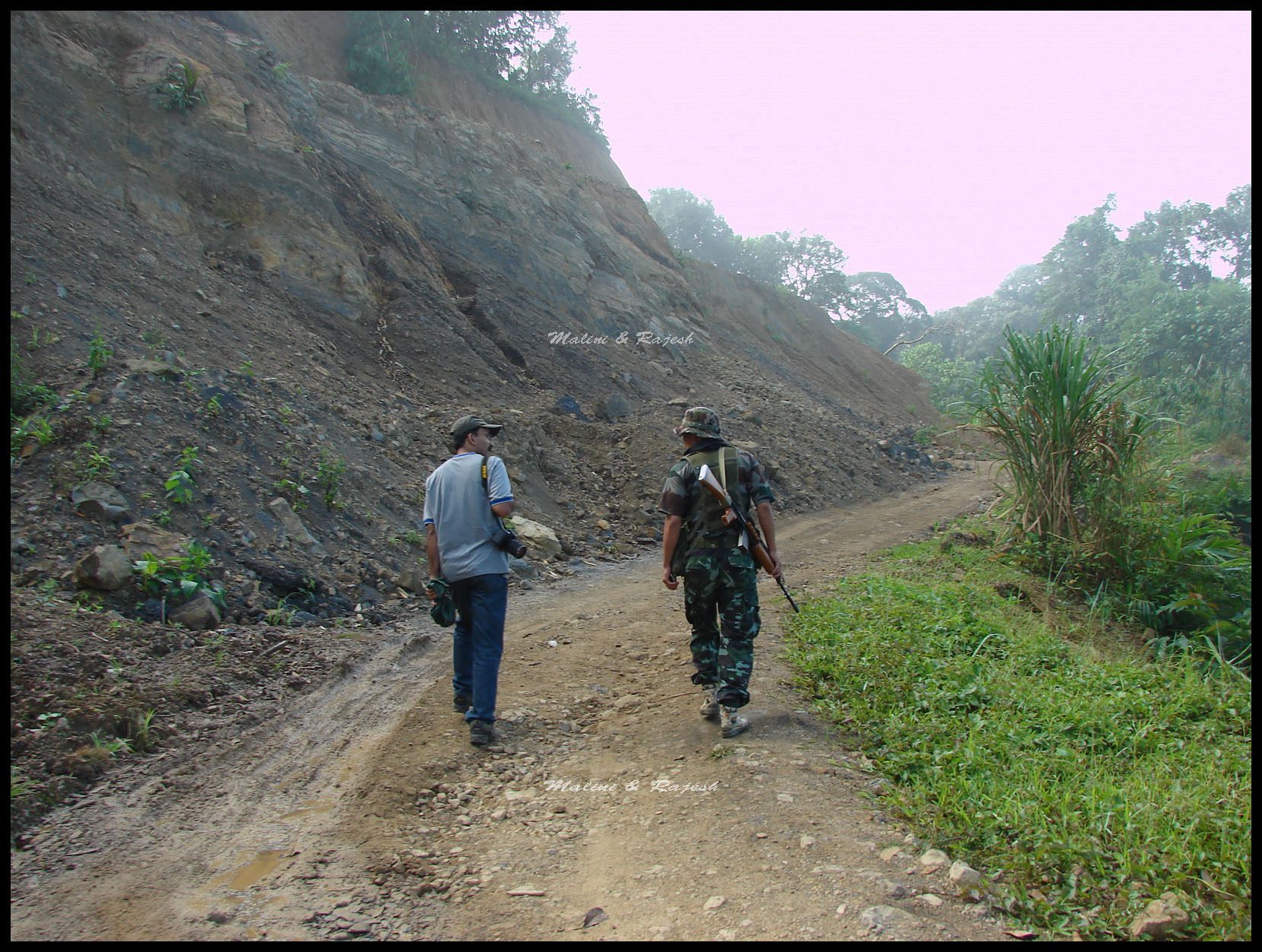
With a shyness that didn’t quite gel in with his profile, he opened up with a little conversational support from me. Our escort, deferential but smart, was Baithye from Manipur and was currently posted to this outpost. There were not many Indian tourists, he told us, who made this journey.

Of course, there were the villagers from Nampong and the crowds that thronged during the Pangsau Pass winter festival. But, I realized, it was only the oddball Stilwell enthusiast who dropped in and that wasn’t a number to worry the Indian Army much!
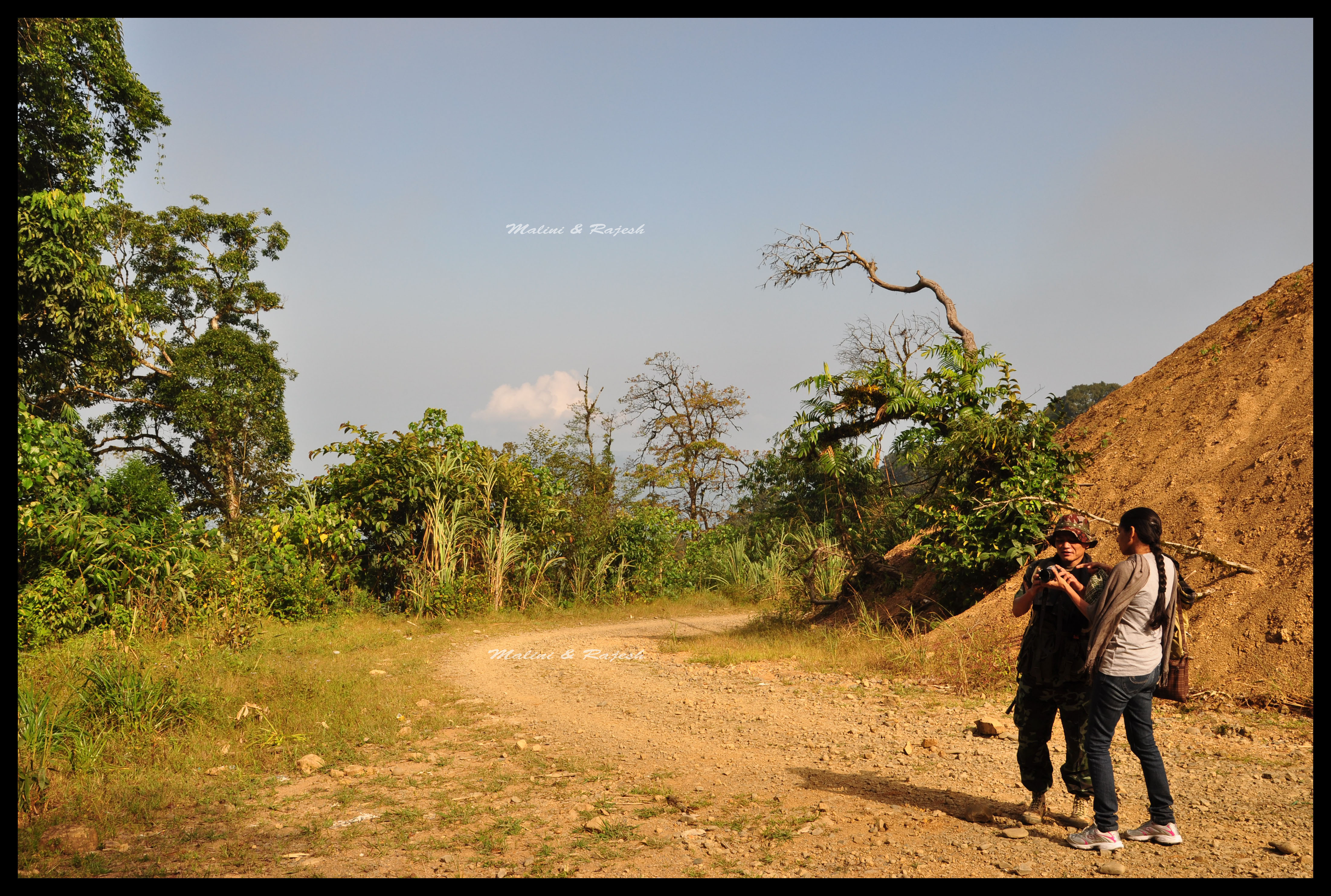
At Pangsau Pass
We had turned a corner and were out of sight with the horde we had left behind. And, presently, we spotted the board I began this post with. We were at Pangsau Pass!
It was impossible not to freeze the moment and save it for posterity. We gladly let ourselves be shot by a soldier. Of course, he had tucked his rifle aside and gingerly felt his fingers around my D90 and fired the first round. I requested him to share the frame with me while Malini played soldier.
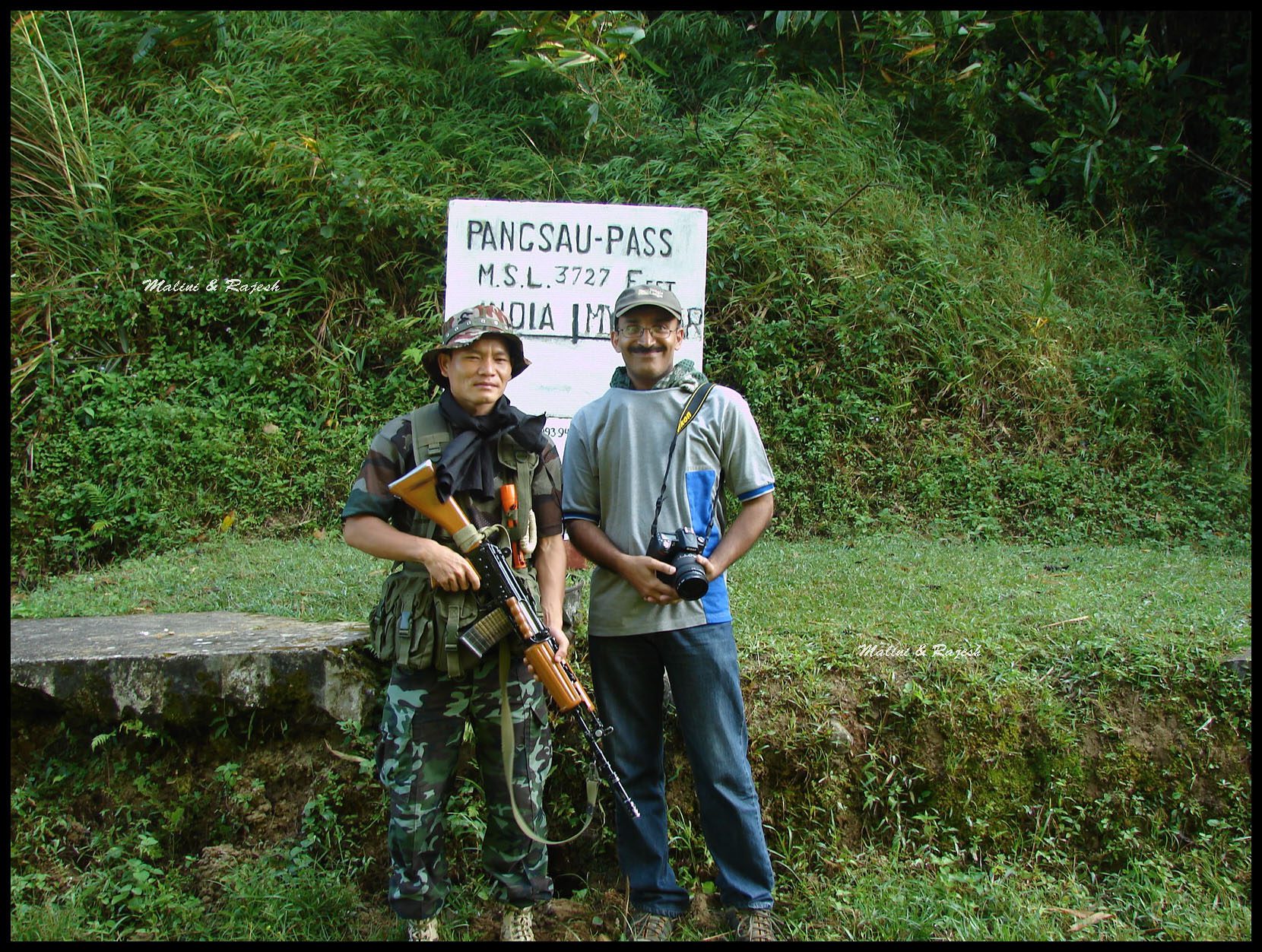
And we’re in Myanmar
We were now at the spot which, the board above us said, was the Indo-Burmese border. The check-post of the Myanmar army was still a few hundred metres away, beyond another bend in the road. In the absence of a proper permit, reaching the Burmese check-post was a no-no. We did, however, walk a few metres further on before turning back.
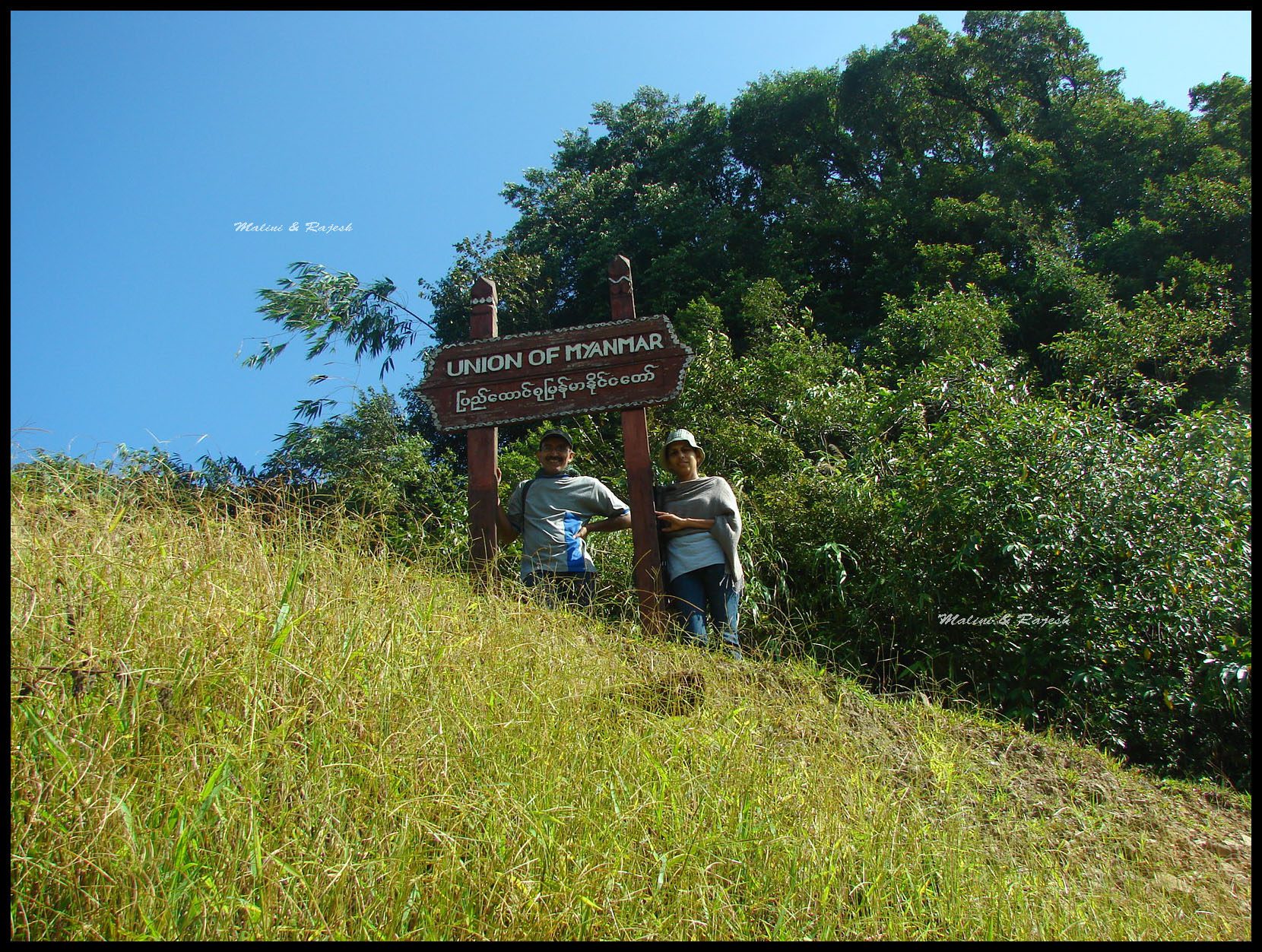
Burma had just been a few strides away. Two kilometers across the check-post lay the village of Pangsau. And not too far away, the mysterious, almost mythical, Lake of No Return. This waterbody gets its somewhat intriguing name from a piece of world war folklore that likens it to the Bermuda Triangle. It is said that, during WWII, an unverified number of Allied aircraft that flew over the lake had either crashed into it or simply disappeared. The Lake of No Return still has many remains of the Aircrafts of American Army buried at its depths.
Adding to the mystery are also reports of soldiers, including those working on the Stilwell Road, having stepped into the lake and losing their lives. In fact, the Lake of No Return figured prominently in the joint scheme mooted by the Indian and Myanmar governments to promote tourism in the region. For now, it had, tragically for us, become the Lake of No Entry!

Back at the Indian check-post, we bid our new Manipuri friend goodbye and drove back. We passed more villagers – both on foot and cramped into the open vans. We wondered if there was any wonder that they ever felt for the road that had drawn us like a magnet all the way.

Bustling Nampong market
As we drove back into the IB, we noticed a trickle of villagers leave the road, skirting the edge of the IB premises. They were taking a shortcut down to the market below, saving them a couple of kilometers had they taken the road. For us, this was a once in a lifetime visit down Arun’s road. For them, the weekly hike was all about getting food, and other essentials, on the table back home.
Breakfast over, we drove out of Nampong, headed for Miao for the Namdapha leg of our trip. As we passed the marketplace, Dasda slowed down to show us, Burmese villagers, busily shopping around. They were huddling around hawkers, queuing up for liquor, flitting from one shop to the other. No one was a wanton tourist. There seemed a definite purpose to their long, painful international hike they made this morning.
Arun at Pangsau Pass
Driving down the Stilwell Road for one last time (at least in this visit), we remembered Arun. Twice he had reached Nampong and turned back…only to come back and go the whole hog down the road that meant everything to him. He too had stayed at the Nampong IB, clicked himself to posterity at the signboard at Pangsau. Unlike us, he went further down past the village and onwards to Myitkyina in Burma to reach Kunming in China.

But his journey was still only half done. His travels on the road were just half his mission. The other half was the book he so wanted to write. All we have today, as Arun’s dream, are some photographs and a few opening chapters that he left behind. Going by that alone, it was clear that it would have had all the purpose that the Stilwell Road was meant to have. But, as with the road itself, all that we are left with is the beguiling aura, the undying charisma that Arun’s book holds in eternal promise.
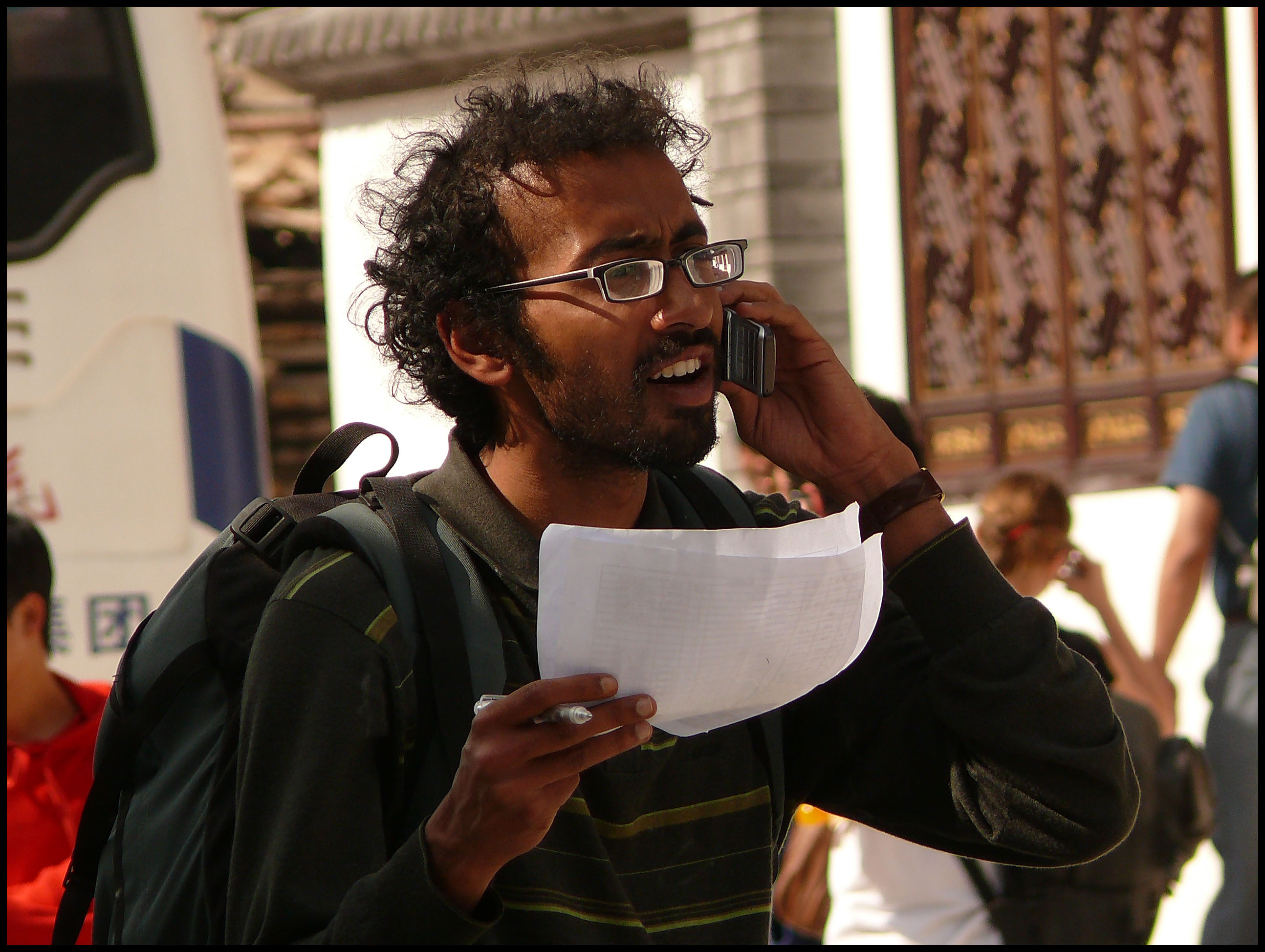


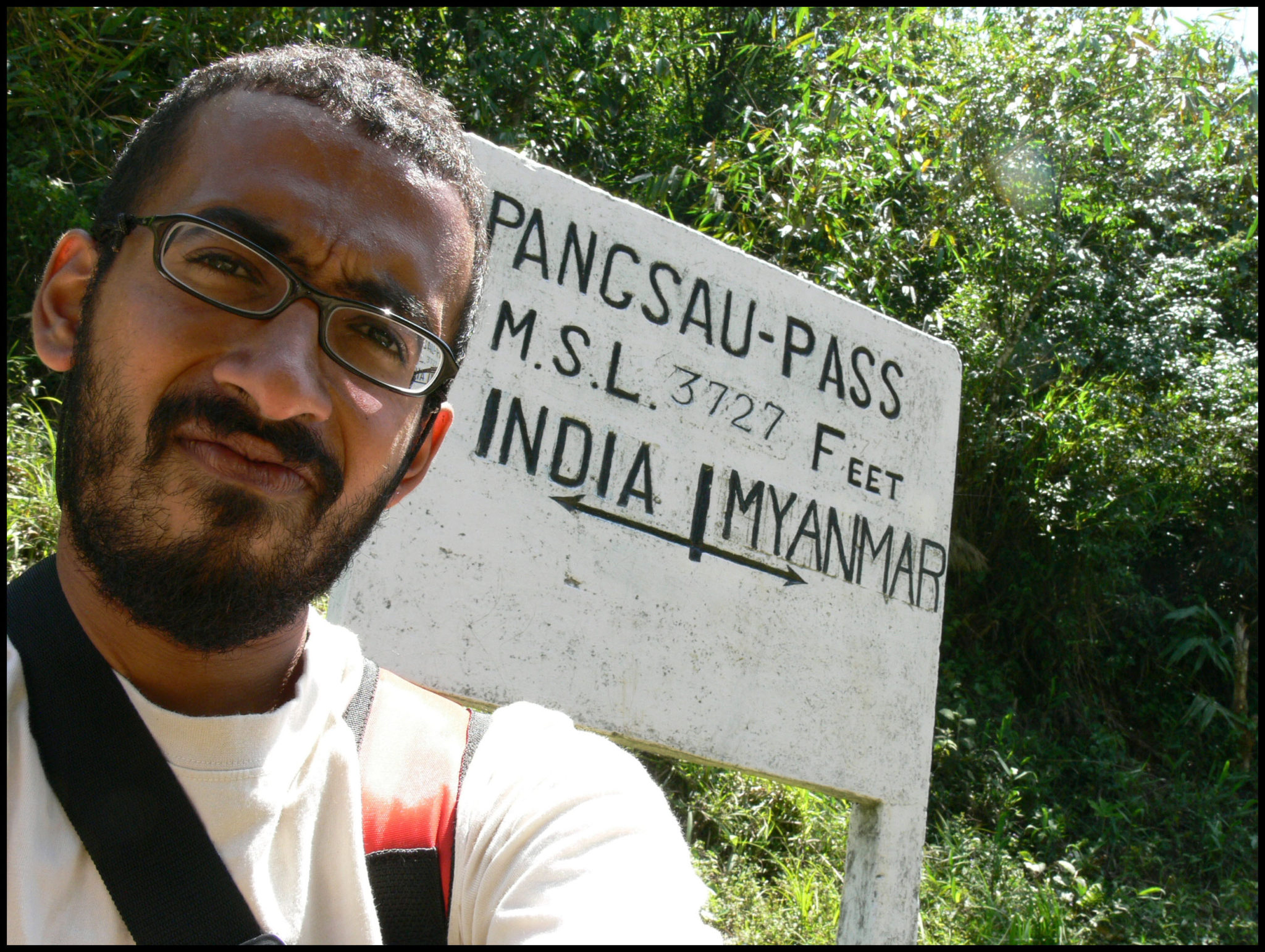


47 Comments
Beautiful story, beautifully told. Loved reading it. I am sorry for Arun.
Thanks, Sunil, for the comments and the kind words. Appreciate your dropping by…
beyond words ….
Thanks, Dileep. Good to hear from you again.
Great tribute to Arun!
Thanks. The real tribute would be getting his book published. I hope we can get to do that someday.
This is one post I didnt enjoy reading… These damn tears are not letting me…. Heart wrenching to say the least!!!
Yes, Nisha. Strange that that’s the way we feel now about someone who could keep you in splits all day.
True tribute to an extraordinarily short life !!
Superb high quality post from the Travelenz DUO …
Keep this coming…
Thanks, Dilip! It felt great to relive a part of Arun’s journey, even if it was only a few paces from his starting block.
Loved reading your experience of the same journey Arun took few years back. Relived the excitement when he was all set to take the same path.
Thanks Maya. Standing there at the Pangsau Pass, we were also trying to emulate his intrepid curiosity, his excitement and the fascination (or obsession) he had for the Road and the Pass.
Beautifully written. At the end I felt I too have been a co traveller, saw, experienced …..but all with a very heavy heart. Still the lump is in my throat…
Thanks Rajaniedathy. Yes, this journey was different in many ways. There was excitement, but as you said there was always a lump in the throat, a tear in the eye.
As every-time, Jaji and Cherri cheers us with their superb and lively narrations and warmth, intermingled with beautiful pics. This was truly a touching tribute. I felt transported to Nampong and Jairampur, with nostalgic memories of a place I’d lived 3 decades back. And remembered Arun staying with us at Roing and later telling me of his Pangsu- pass trip…..
salutations to his memory and to the writers who brought it alive!
– uncle moosa
Hello Uncle Moosa!
We are touched to get such glowing feedback from someone who knows the region like the back of his hand (and a very helping one, at that!) and who Arun was so very fond of.
In fact, I can’t resist adding here that our unforgettable North East trip of last October was mostly inspired and facilitated by you as much as the Pangsau and Stilwell part of it was sparked off by Arun and his indomitable spirit.
As I shared with you in person (but was delinquent in mentioning in this post – something I regrettably missed out), it would have been so much better if you could accompany us to Jairampur, Nampong and Pangsau. But your reputation sure does precede you. The warmth and affection with which we were received at VKV, Jairampur was ample proof of how much they regard you – and we were happy to be the unwitting beneficiaries of that largesse 🙂
Beautiful tribute to a courageous, adventurous soul!
Loved the aerial shot of the Stilwel Road the best!
Thanks Deepak for stopping by.
Never knew you write so nicely! A nice tribute to an adventurous soul. Nice to know him through your writing. Thanks for giving life to his memories.
Thanks Thomas for the comments. Hope we can keep his memories alive with his book.
My dear Malini and Rajesh
This afternoon we didn’t take the usual “afternoon nap” since we were so immersed in reading or rather hearing Zoya reading out the enthralling account of your trip to Arunachal – of Arun’s pet project of stillwell road. Your narration was so moving that we forgot to have our usual afternoon nap. It was very difficult to read your writeup due to my eye problems and also a teardrop in our eyes.
Achan, Amma
Touched and moved ourselves to read these words. Means ever so much to us, as you well know. A very warm welcome to Travellenz to two very special people!
How did I somehow afford to miss this?
Extremely well written Rajesh, you literally drove me to Stilwell with your descriptions.Was shocked to know about Arun and wish someone takes up his dream and completes a book on the Stilwell.You have actually motivated me to live my dream of a road trip to Burma( I too, love the enchantment associated with calling Myanmar as Burma).Will contact you for details.
I loved this post so much that I read it again. Once again, an extremely touching post which paints many a paintings with words.
I have shared this on twitter, even though I don’t have too many followers:)
Thanks, Arnab! What makes sharing experiences so worthwhile is when we can appreciate and also benefit from each other’s travels. Would be happy to help you with your dream road trip to Burma with whatever inputs we can provide. Hope you get to do that soon enough and regale us all with your trip account and photos. (Btw, I was going through your blog when this comment came in – the post about the road trips. Interesting thought that!)
Thanks again…esp. for sharing it on twitter. Look forward to sharing each other’s notes. Cheers!
You are right Malini, its the thing about sharing and getting excited about each other’s travels, that makes travel blogging such an enthralling experience. I am so glad to have met such wonderful people and travelers in the blogging circuit, including you and Rajesh.
Arnab, we share the same sentiments as you.
Thanks Supratik Guha for referring my blog entry on your blog http://indianfoodreviews.blogspot.com/2012/04/stilwell-road-assam.html
We must have walked the Stilwell road a thousand times ‘virtually’ before making it in person to Pangsau Pass. Yes, the power of Google maps.
Beautiful Arunachal! I always wanted to visit NE and your blog makes me run t’row!! 🙂
Thanks Kusum. Do visit Arunachal; it is a magical land.
Dear Rajesh and Malini,
I have a dream of visiting Pangsau pass since many years, which dragged me to your post. I read this article again and again. That gave me various mixed feelings which I am unable to express in words.
It is heart-touching because of Arun’s ‘dream journey’, whom you have aptly illustrated as ‘a brilliant student, an impossibly reckless but adorable human being, a fantastic writer, a traveler intrepid and a dreamer like no other.’ A person like him only can write a book on historiacal Stilwell Road’. A person like him (and of course like both of you) only can bring people like us to ‘Lake of no return’. A person like him only can inspire to visit ‘Hell pass’ and to homage. I hope, you will bring to light his uncompleted dream of book on Stilwell Road.
By the way, I had been to Walong last month. It was one of my unforgettable journeys. I referred both of you to R B Singh, in-charge at Walong IB (and other friends I meet on way to Kibithu). Singh accompanied us to places in this area and that was wonderful ‘Down memory lane’ story.
I was the first person and journalist who stood in front of Walong War Memorial to pay homage to our unsung heroes on the occasion of 5o years of India- China War. I felt very sad that how crores of Indians can forget our heroes who lost their lives in the period of 18th Oct. to 16th Nov. 1962. which marked in Indian history as ‘Battle of Walong’.
I could not go to Helmet Top as well as Border because of landslides. Actually, road to Kaho and Kibithu was destroyed at many places due to unprecedented rain and landslides, but I reached to Meshai after criss-crossing through some landslides and nullahs, and trekking at some places. But those made my days!
The bridge at Meshai is no more now!
Sorry, this mail was intended to acknowledge your post, but I went on narrating my journey.
I am planning now to visit Pangsau in Jan. 2013 which will take me again to ‘down memory lane’ with your this one article!
I am not sure whether you can read Marathi, but I am attaching a page of my article along with this mail for your perusal-
http://epaper.prahaar.in/detail.php?cords=14,6,1478,1732&id=story1&pageno=http://epaper.prahaar.in/20022011/Mumbai/Suppl/Page8.jpg
Thanking you again and hoping to see you sometime, somewhere in ‘Heaven’ like Walong,
-Alhad
Thanks Alhad Sir for the comments. Arun was different. When boys of his age wanted to get settled and marry, Arun wanted to explore the wild. Now only his memories, photos and a few scraps of notes remain.
I’m so happy to know that you were the first person to stand in front of the Walong War Memorial to pay homage to the heroes on the occasion of 50 years of the India-China War. Hope you get to cross the border at Pangsau next year.
Here is one more link for your perusal-
http://epaper.prahaar.in/detail.php?cords=16,104,1470,1636&id=story2&pageno=http://epaper.prahaar.in/17042011/Mumbai/Suppl/Page8.jpg
Hi Malini
Im shocked and very shocked to hear about Arun.
i have nothing much to say, but that Arun & Me both did the mountaineering course together.
We both started our traveling adventures together and often talked about our journeys – i ended up running an adventure travel company and Arun…..
right now. im lost for words. cant think of anything.
take care.
prateek deo – mumbai
9869158351
Hi Prateek
I’m sorry Prateek, that you came to know about Arun so late. He was so passionate about anything to do with mountains, adventures and travel. I’m sure you must have had some very memorable times together.
Hi Malini & Ettan,
Wonderful write-up about a wonderful person. Knowing Arun, the optimistic and adventurous soul he was, I’m sure he’s up there somewhere with that eternal grin of his observing all of us ….. and pursuing his dreams.
Keep writing!
Promod
Thanks Promod. Standing beneath the Stillwell Road board and at the India-Myanmmar border at Pangsau Pass, we were also trying to be a little like Arun – adventurous. I could almost visualize him talking animatedly about his previous journeys, cracking jokes and having a good time. Hope he is somewhere in a better place.
Hi,
I land up on your article while searching for Stilwell Road. I felt loss the of one of the sons on Arun’s early departure. After completing the article and its 36 or so comments I felt I returned back to the Lake of No Return with a heavy heart and I feel I am still trapped there. Any article available of the journey till Kunming through Stilwell ??
Thanks for the comments. All we have are a few incomplete chapters from his hard disk and a some notes. His journey remains to be told.
Malini, Finally, I am going to Pangsau this weekend.
I must give credit to both of you and Arun who are passinately inspiring me to let my one more dream come to truth.
I think, you must have a plan to publish Arun’s Untold Story’ of Stilwel Road. I would like to like to extend my help in whatever manner…but it must get light of publication..
-Alhad
Alhad Sir
I envy you so much (in a positive way) right now. And also so happy to know that you are going to Pangsau. You will also attend the Pangsau Pass Festival, right? Hope you get to go the Pangsau village and the lake of no return. Do share your travel notes and photographs.
I think we should give all the credit to Arun for his silent presence and inspiration. We would have never thought of going to Pangsau if Arun had not taken the interest.
We all want his work published. His writing style was unique and it will be very difficult to approach his story in our way. Nobody has the guts to piece all the bits together. I think a little bit of convincing is necessary. Thanks for extending your help. Will let you know if we need help on anything.
Have a wonderful and safe journey.
Recently on 9th Jan, ’14, I also went to Pangsau Pass.But due to no permit from SDO I could not go forward to see the Lake of No Return.Stillwell Road will attract travelers like Arun always. You will find international borders in other parts of India also. But the romance of international border in northeastern region is different in terms of scenic beauty.
Nabanita, you should feel proud about yourself for at least making it to the Pangsau Pass and till the border of Myanmar. And for the Lake of No Return, there is always another chance. There are people in India who have never even heard about this place and the historical importance attached to it. And yes you are right – there is always a romantic factor attached to the northeastern states.
Thanks for the post. Arun and I worked together in Bangalore for an year.
I moved to US in 2005 and it was a shock when I read the new in Hindu.com.
He was a genius and his thoughts were always different. Hope his parents are well.
Robin
Thanks for stopping by. It has been almost five years since Arun left for a better place. And We miss him dearly.
My husband is doing almost the same trip with his bicycle. He will start tomorrow. I am nervous and excited at the same time. Loved reading the article. Beautifully written.
hi everybody
I’m planning a trip by road with a 4wd camper-van from Italy to Honk Kong along the most beautiful Tea lands in Darjeeling, Assam and Yunnan;
does anybody know if for foreigner it’s possible to cross the Pangsau Pass border from India to Burma with proper special permission (and hints where to get it)?
Thanks!
– Enrico
Hello Enrico
INDIANs and MYANMAREEs can cross the border for doing trade on specific days of the month. I have read somewhere that foreigners are allowed during the Pangsau Pass Winter Festival that takes place every year in January. During the festival foreigners can visit Nampong village, in Arunachal Pradesh’s Changlang District, that borders Myanmar. Pangsau Pass is 12 km from the check post in Nampong. However All Foreigners need a Protected Area Permits to visit Arunachal. One can obtain the Protected Area Permit from, All Indian Missions abroad, All Foreigners Regional Registration Officers (FRRO) at Delhi, Mumbai, Kolkata, Chief Immigration Officer, Chennai, Home Ministry, Govt. of India and Home Commissioner, Govt. of Arunachal Pradesh, Itanagar.
More information here
http://www.mdoner.gov.in/content/rappap-restrictedprotected-area-permit
http://arunachalipr.gov.in/ILPEntry.htm
Regards
Malini